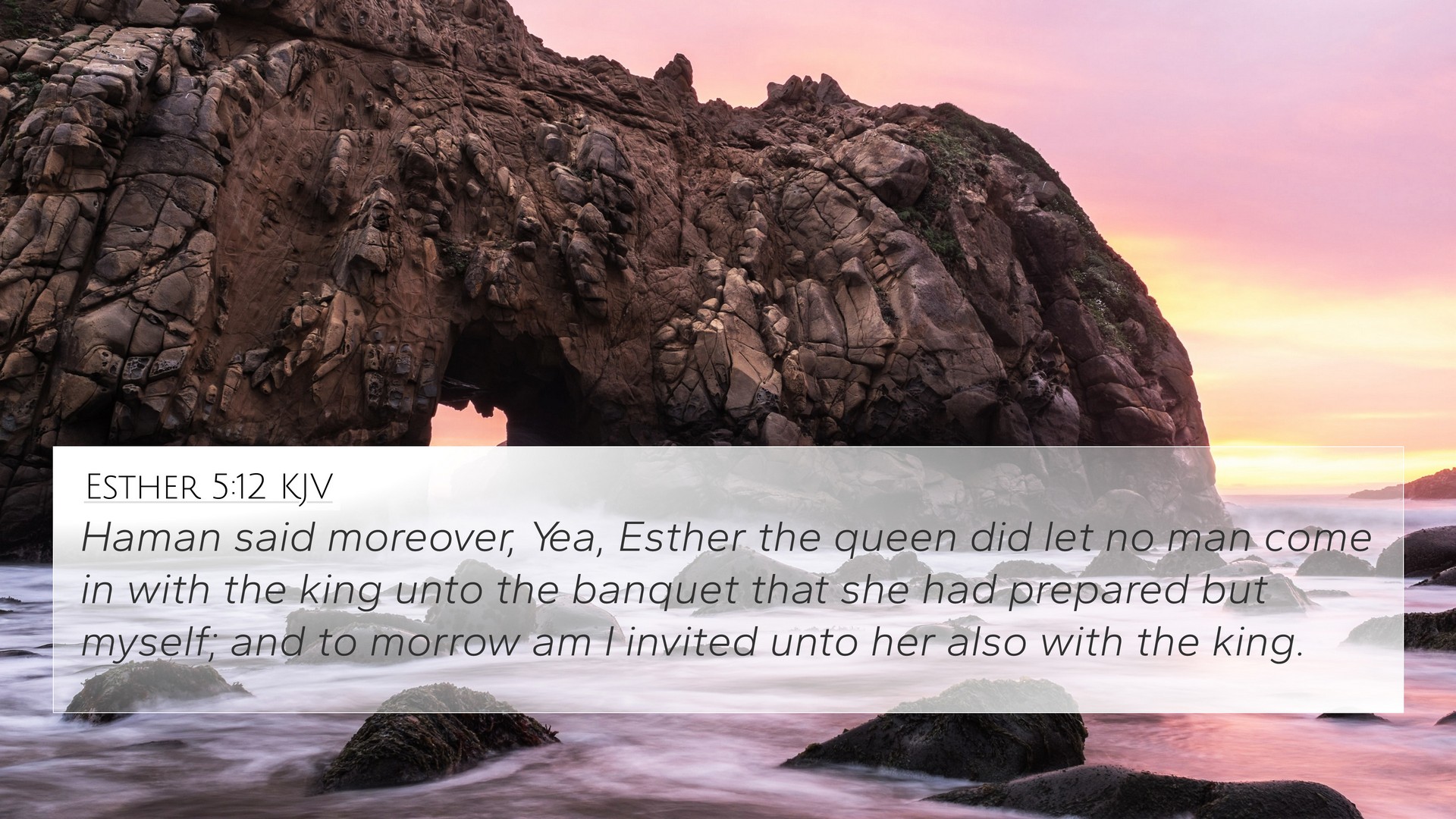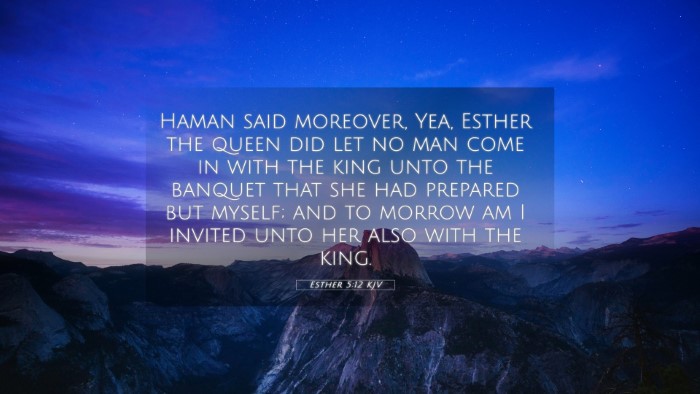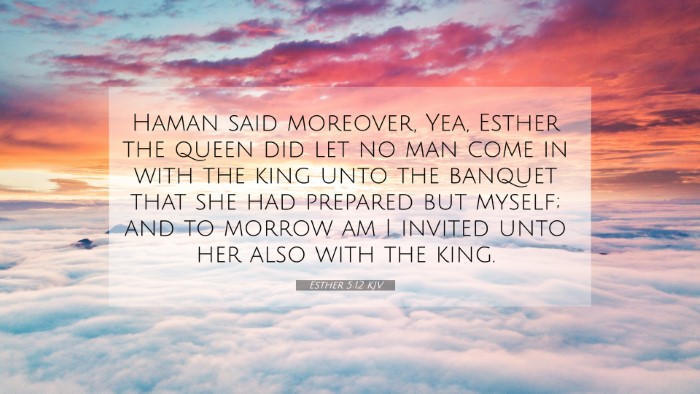Old Testament
Genesis Exodus Leviticus Numbers Deuteronomy Joshua Judges Ruth 1 Samuel 2 Samuel 1 Kings 2 Kings 1 Chronicles 2 Chronicles Ezra Nehemiah Esther Job Psalms Proverbs Ecclesiastes Song of Solomon Isaiah Jeremiah Lamentations Ezekiel Daniel Hosea Joel Amos Obadiah Jonah Micah Nahum Habakkuk Zephaniah Haggai Zechariah MalachiEsther 5:12 Similar Verses
Esther 5:12 Cross References
Haman said moreover, Yea, Esther the queen did let no man come in with the king unto the banquet that she had prepared but myself; and to morrow am I invited unto her also with the king.
Uncover the Rich Themes and Topics of This Bible Verse
Listed below are the Bible themes associated with Esther 5:12. We invite you to explore each theme to gain deeper insights into the Scriptures.
Esther 5:12 Cross Reference Verses
This section features a detailed cross-reference designed to enrich your understanding of the Scriptures. Below, you will find carefully selected verses that echo the themes and teachings related to Esther 5:12 KJV. Click on any image to explore detailed analyses of related Bible verses and uncover deeper theological insights.
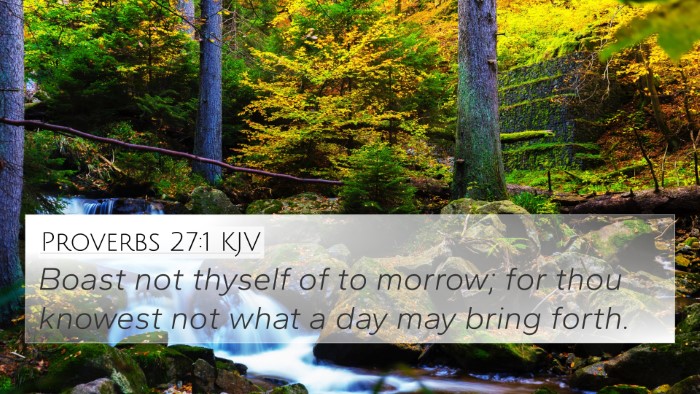
Proverbs 27:1 (KJV) »
Boast not thyself of to morrow; for thou knowest not what a day may bring forth.

Psalms 37:35 (KJV) »
I have seen the wicked in great power, and spreading himself like a green bay tree.

Job 20:5 (KJV) »
That the triumphing of the wicked is short, and the joy of the hypocrite but for a moment?
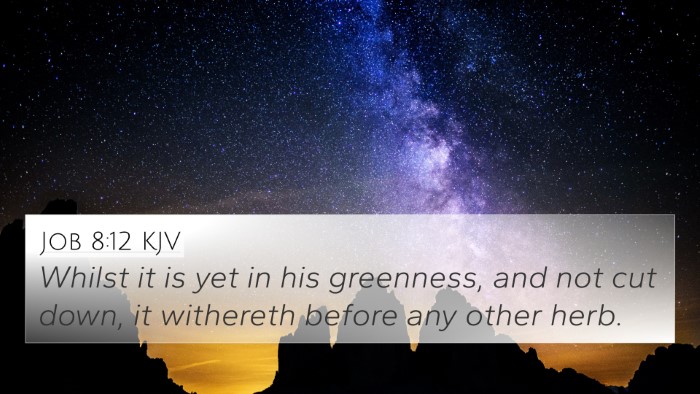
Job 8:12 (KJV) »
Whilst it is yet in his greenness, and not cut down, it withereth before any other herb.
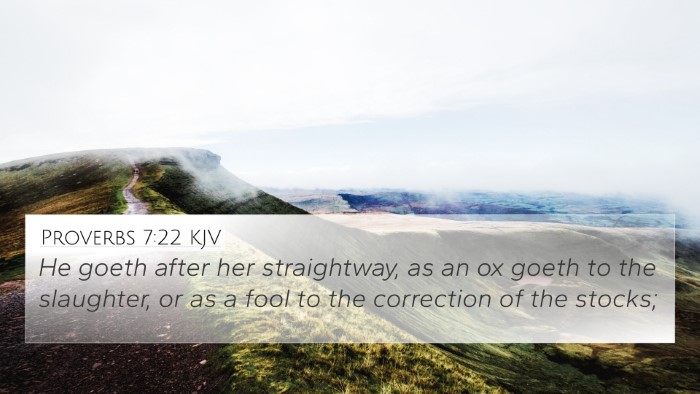
Proverbs 7:22 (KJV) »
He goeth after her straightway, as an ox goeth to the slaughter, or as a fool to the correction of the stocks;

Luke 21:34 (KJV) »
And take heed to yourselves, lest at any time your hearts be overcharged with surfeiting, and drunkenness, and cares of this life, and so that day come upon you unawares.
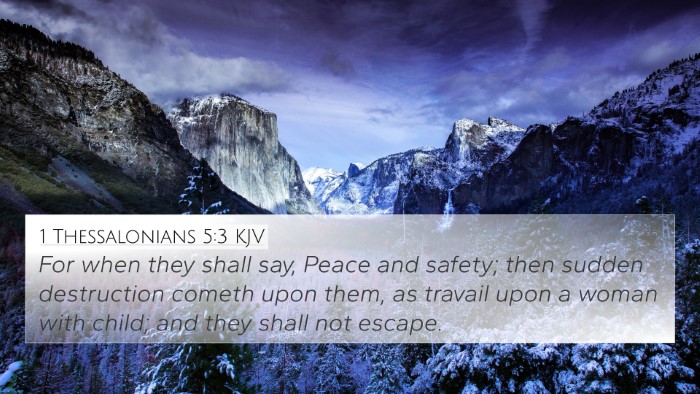
1 Thessalonians 5:3 (KJV) »
For when they shall say, Peace and safety; then sudden destruction cometh upon them, as travail upon a woman with child; and they shall not escape.
Esther 5:12 Verse Analysis and Similar Verses
Understanding Esther 5:12
Esther 5:12 states: "Moreover, Haman said, 'Besides, Queen Esther, let no one but myself come with the king to the banquet she has prepared. And tomorrow also I am invited by her together with the king.'" This verse reveals significant thematic elements within the narrative of Esther and affords opportunities for deeper interpretation through cross-referencing.
Contextual Analysis
The context of Esther 5:12 lies within the plot of Haman’s conspiracy against the Jews, highlighting his arrogance and pride. By choosing to highlight his exclusive invitation to the banquet held by Queen Esther, Haman is not just boasting about his position; he is revealing his deep-seated desire for power and recognition.
Key Themes
- Pride and Arrogance: Haman's boasting about the queen's favor serves as a foreshadowing of his downfall.
- Divine Providence: The unfolding events illustrate how God orchestrates circumstances for His purposes, often using unexpected means.
- Conflict and Resolution: The tension between Haman and Esther signifies the spiritual battle for the survival of the Jewish people.
Bible Verse Cross-References
This verse connects thematically to several other Bible passages. Here are some key cross-references:
- Proverbs 16:18: "Pride goes before destruction, and a haughty spirit before a fall." This emphasizes the fate of those who are proud like Haman.
- Esther 3:5: Haman's anger escalates after Mordecai refuses to bow before him, illustrating how pride can lead to conflict.
- Matthew 23:12: "Whoever exalts himself will be humbled, and whoever humbles himself will be exalted." A relevant reminder that humility is valued in God’s kingdom.
- James 4:6: "God opposes the proud but gives grace to the humble." This reflects God's resistance to Haman's pride.
- Genesis 37:20: The story of Joseph, where the brothers' jealousy leads to their plotting against him, parallels Haman's conspiracy.
- Galatians 6:7: "Do not be deceived: God is not mocked, for whatever one sows, that will he also reap." A reminder that our actions, motivated by pride or malice, have consequences.
- Proverbs 29:23: "One's pride will bring him low, but he who is lowly in spirit will obtain honor." This echoes the ultimate outcome for Haman.
- Daniel 4:37: A verse where pride leads to downfall, as seen in Nebuchadnezzar's story.
- Luke 14:11: "For everyone who exalts himself will be humbled." This reflects on humility versus pride in society's constructs.
Comparative Bible Verse Analysis
Examining Esther 5:12 in light of these cross-references reveals a consistent scriptural theme regarding the fall of the proud and the rise of the humble. The Bible is rich with inter-Biblical dialogue that warns against the dangers of arrogance.
Thematic Bible Verse Connections
Through the connections between these scriptures, one can glean insight into God's character – particularly His justice and the principle of divine retribution. Haman's eventual downfall is not merely a narrative point but a larger theological truth: God's purpose prevails despite human pride.
Cross-Referencing Bible Study Methods
To explore and utilize these connections practically, one could:
- Use a Bible Concordance: Identify keywords such as "pride," "humility," and "boasting" to discover related verses.
- Engage in Cross-Reference Bible Study: Create a graphic organizer or chart that tracks how these verses interact with each other
- Participate in Group Studies: Discuss thematic elements and their implications for daily life and spiritual growth.
- Utilize Bible Study Tools: Cross-reference guides and resources to deepen understanding of interconnections.
Conclusion
In conclusion, the examination of Esther 5:12 through the lens of its context, themes, and cross-references provides a enriched understanding of not only the verse itself but the overarching messages within Scripture regarding pride and divine justice. The interwoven nature of these passages highlights the enduring relevance of God's Word across contexts and generations.
